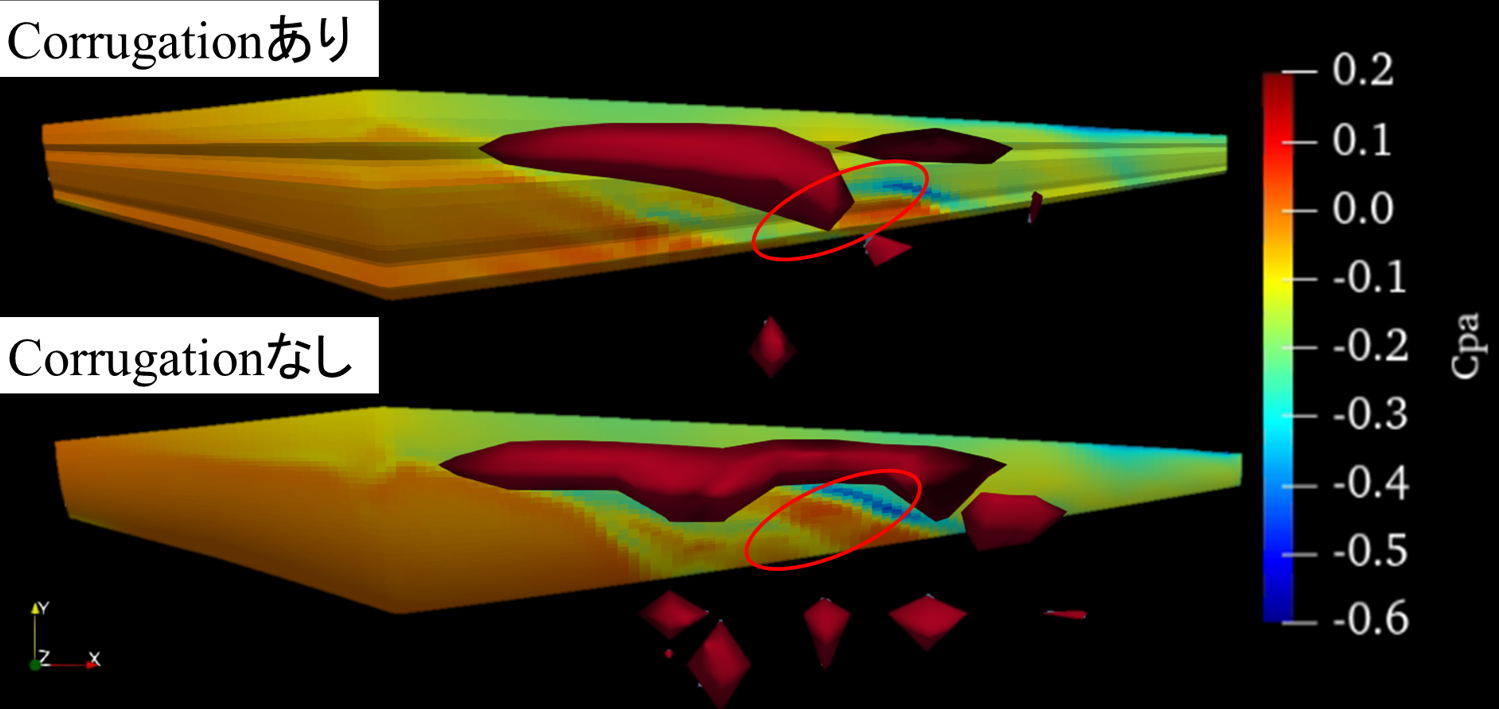Low-cost rotary wing design applied to design optimization of roter blade for Mars helicopter
JAXA Supercomputer System Annual Report February 2024-January 2025
Report Number: R24EACA59
Subject Category: JSS Inter-University Research
- Responsible Representative: Masahiro Kanazaki, Professor, Tokyo Metopolitan University
- Contact Information: Masahiro Kanazaki, Professor(kana@tmu.ac.jp)
- Members: Masahiro Kanazaki, Hikari Kono, Takashi Matsuno, Takumi Nakagawa, Riku Tokuono
Abstract
In this study, we devised rotor blades using thin corrugated airfoils as a concept for storing Mars exploration helicopters in sizes and shapes suitable for rocket transport. Numerical calculations and optimal design were conducted from the perspectives of aerodynamics and propulsion. The optimal design involved evaluations based on two-dimensional airfoil assessments using momentum theory and global exploration using Bayesian optimization, resulting in superior airfoils compared to NASA's Mars helicopter. The optimal design results were verified using three-dimensional CFD with overset grids, and basic evaluations of structural feasibility were also conducted, confirming the solution's promise.
Reference URL
N/A
Reasons and benefits of using JAXA Supercomputer System
In this study, we conducted an optimal design using global optimization. Since the design target is the sectional airfoil shape, a 2D airfoil evaluation is required for each design solution in addition to blade element momentum theory. Although the application of evolutionary computation became possible due to the low-cost evaluation method, which is based on the blade element momentum theory, it is necessary to use JSS3, as it is a numerical calculation governed by the Navier-Stokes equations. JSS3's capability is also required when conducting numerical calculations based on the immersed boundary method for confirmation purposes.
Achievements of the Year
Based on the results of the previous year's study, this research conducted airfoil optimization using the Tree-structured Parzen Estimator, a type of Bayesian optimization. As a result, we obtained a corrugated airfoil with better aerodynamic performance than the initial airfoil and the airfoil used in NASA's Mars helicopter, which was used as a comparison benchmark. This airfoil was applied to a rotor blade and evaluated using CFD with overset grids (Figure 1), revealing that the corrugated structure is useful for suppressing flow separation.
Publications
N/A
Usage of JSS
Computational Information
- Process Parallelization Methods: MPI
- Thread Parallelization Methods: OpenMP
- Number of Processes: 32
- Elapsed Time per Case: 2 Hour(s)
JSS3 Resources Used
Fraction of Usage in Total Resources*1(%): 0.14
Details
Please refer to System Configuration of JSS3 for the system configuration and major specifications of JSS3.
| System Name | CPU Resources Used(Core x Hours) | Fraction of Usage*2(%) |
|---|---|---|
| TOKI-SORA | 3229461.33 | 0.15 |
| TOKI-ST | 191407.37 | 0.20 |
| TOKI-GP | 0.00 | 0.00 |
| TOKI-XM | 0.00 | 0.00 |
| TOKI-LM | 4069.43 | 0.29 |
| TOKI-TST | 0.00 | 0.00 |
| TOKI-TGP | 0.00 | 0.00 |
| TOKI-TLM | 0.00 | 0.00 |
| File System Name | Storage Assigned(GiB) | Fraction of Usage*2(%) |
|---|---|---|
| /home | 0.00 | 0.00 |
| /data and /data2 | 2535.00 | 0.01 |
| /ssd | 0.00 | 0.00 |
| Archiver Name | Storage Used(TiB) | Fraction of Usage*2(%) |
|---|---|---|
| J-SPACE | 0.00 | 0.00 |
*1: Fraction of Usage in Total Resources: Weighted average of three resource types (Computing, File System, and Archiver).
*2: Fraction of Usage:Percentage of usage relative to each resource used in one year.
ISV Software Licenses Used
| ISV Software Licenses Used(Hours) | Fraction of Usage*2(%) | |
|---|---|---|
| ISV Software Licenses(Total) | 608.62 | 0.42 |
*2: Fraction of Usage:Percentage of usage relative to each resource used in one year.
JAXA Supercomputer System Annual Report February 2024-January 2025



